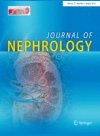Clinical characteristics and outcomes of kidney transplantation in autosomal dominant polycystic kidney disease patients
Abstract
Background
Kidney transplantation (KT) is the best kidney replacement treatment for autosomal dominant polycystic kidney disease (ADPKD). We aimed to investigate the clinical characteristics and outcomes of KT in ADPKD patients compared to those in non-ADPKD patients.
Methods
We retrospectively analyzed KT recipients in two Korean transplantation centers from 2005 to 2020. Propensity score-matching and Cox regression analysis were used to assess the clinical outcomes of ADPKD compared to non-ADPKD and identify prognostic factors influencing outcomes in ADPKD.
Results
Among a total of 4452 KT patients, 189 (4.2%) were ADPKD patients. Median age at transplantation was 53.0 and 47.0 in ADPKD and non-ADPKD patients, respectively. In both groups, living-donor KT was more common than deceased-donor KT. The ADPKD group had a 4.09-fold higher risk of post-transplant diabetes mellitus and a 1.65-fold higher risk of post-transplant infection compared to the non-ADPKD group; however, subjects with ADPKD had similar risk of rejection, graft failure, and mortality. In the ADPKD group, kidney volume decreased after KT, irrespective of kidney volume status (Mayo classification), while the size of hepatic cysts increased. Neither kidney volume nor nephrectomy of native kidneys were associated with risk of infection, graft failure, or mortality in the ADPKD group.
Conclusions
ADPKD patients have a higher risk of post-transplant diabetes mellitus and infection than non-ADPKD patients, with no significant impact of kidney volume or nephrectomy on post-transplant outcomes.
Graphical abstract




